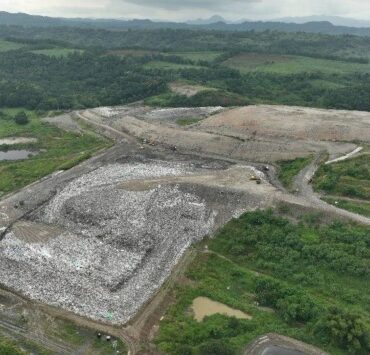Preparation for adverse climate change

By this time, with the holiday season just a few weeks away, many companies have started or are in the middle of planning sessions for the next year.
Traditionally, those activities center on a review of the business plans for this year and whether or not they were properly implemented or their objectives satisfactorily met.
Looking forward to 2025, the discussions are expected to review closely the company’s strengths, weaknesses, opportunities and threats, or SWOT, as corporate planners fondly describe them.
The idea is, by examining those items and interrelating them in the context of actual business operations, management would be able to come up with programs that would enable the company to recover from a not-so-favorable financial situation, or improve a so-so bottom line, as the case may be.
In addition to the usual subjects for discussion, e.g., preferences of the target market and quality of products and services, the issue of adverse effects of recurrent weather disturbances brought about by climate change may have to form part of the talking points.
Note that in the past weeks, several parts of the country were hit by rain and wind of super strength that resulted in massive floods and damaged structures that had not been experienced before.
Some meteorologists predict that these natural phenomena are expected to recur often and with more devastating effects in the coming days due to climate change, and that no country, no matter how developed it may be, would be immune from nature’s wrath.
Given these circumstances, for business planning purposes, adverse climate conditions would no longer be a case of “what if they happen” and instead “when they happen.” It’s no longer a matter of chance, but reality.
Significant and prolonged business disruptions brought about by climate change now represent a challenge that businesses must acknowledge as inevitable and be prepared to contend with to ensure their survival.
They cannot allow themselves to be caught flat-footed and totally unprepared in a manner similar to what happened during the COVID-19 pandemic that hit the world in 2020.
Because that extreme health emergency was unprecedented, majority of domestic businesses that year did not have any backup or alternative plans on how to maintain their operations in a situation when pedestrian and vehicular movement was restricted and face-to-face transactions were discouraged.
With no lessons in the past to look to for guidance, businesses that were seriously affected by the medical protocols imposed then were forced to improvise and engage in insufficient reactive measures.
To aggravate matters, the administration at that time grievously fell short of its responsibility to provide the leadership needed to enable the country to meet the challenges of the once-in-a-century medical scourge.
The result? Thousands of businesses failed and millions of Filipinos lost their jobs and other means of livelihood.
With the experiences from the pandemic in mind, business planning sessions would have to set up contingency plans in case extreme weather conditions prevent employees from reporting for work or to engage in activities that ensure the company is able to meet the requirements of its clientele and which, most importantly, includes the collection of revenues needed to sustain the operations of the business.
This may involve scenario playing or assuming that an event, say, a massive flood that prevents access to the workplace, had happened and employees are given assignments on what to do to keep the operation going or minimize the unfavorable effects of that disruption.
Forward planning to address adverse climate conditions is not going to be cheap because it would require setting aside funds for the adoption and implementation of measures that would, hopefully, mitigate them.
For obvious reasons, it is better to be proactive rather than reactive in situations where Mother Nature exclusively calls the shots.


















